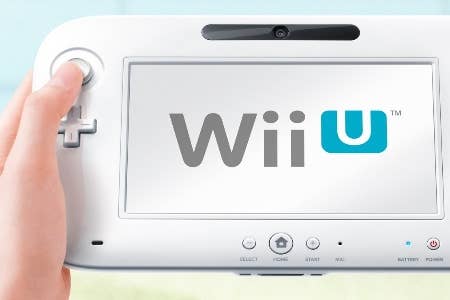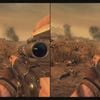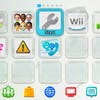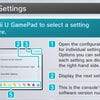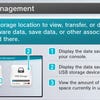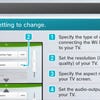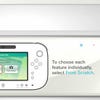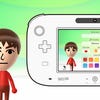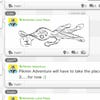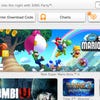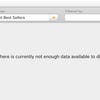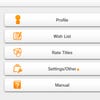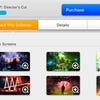Nintendo Wii U review
Does the next-gen start now? Digital Foundry reviews the US Wii U
It's been a long time since we've produced an import review - thankfully the dark days of console releases separated by months or even years are now a thing of the past - but Nintendo's new Wii U is out now in the USA, almost two weeks ahead of its European debut, and when the opportunity arose for us to acquire a unit ahead of time along with a clutch of games, we jumped at the chance. With that in mind though, before we go any further we need to stress that this review is based entirely on US hardware, so there may well be differences compared to the console you'll be buying. We'll be sure to clue you in on those variations as soon as we get our hands on the UK model, but at the time of writing we've yet to receive one.
So here we are with an American Wii U, bringing with it the legacy challenges of running "NTSC" equipment in the 50Hz territories - specifically ensuring that we don't blow it up by connecting up the 110v power supply into 220v "PAL" mains. A quick trip to Maplin to pick up a 300W step-down transformer was our chosen solution - overkill bearing in mind the power-efficiency of the console, but probably best for covering our bases if we find ourselves facing the same issue with the next-generation Xbox in 12 months' time. With the power supply situation resolved, we were ready to begin. The next generation of console gaming - or rather, Nintendo's vision of it - begins now.

First impressions on opening up the box? There's a fair amount of kit in here. Two slim cardboard boxes compromise the interior of the package, with the console and GamePad in one and accessories in the other.
Our 32GB Premium Pack provides us with a Wii U console and GamePad in glossy black. The console itself is longer, a touch taller and more rounded at the edges than its predecessor, but still a small, compact, nicely designed little unit. Even compared to the new PlayStation 3 "Super Slim", Wii U feels diminutive in comparison and rather smart-looking. However, plastics on the main unit are hardly of a premium quality, attracting fingerprints and marking easily, and within two days of general usage (including relocating the unit to different Wi-Fi hotspots - more on that later), we detected faint scratching on the side of the casing. Drive noise is noticeable but not overly intrusive - a fairly good match for the new PS3 - while the small fans need to spin up to quite a rate to expel the necessary amounts of hot air. Again, we feel it's a fairly close match to the latest Sony console and quieter all told than the Xbox 360S.
In an era where the slate form factor has been defined by the iPad, the GamePad feels slightly insubstantial, almost like a toy. There are durable matte plastics on the rear, which hosts the shoulder and Z buttons, a cheap-feeling volume slider, a headphone port, IR transmitter, the pull-out stylus and a power input. The front of the GamePad features glossy plastics that are a match for the console, along with camera and gaming controls. It's easy to conclude that this is a unit built to a price - a state of affairs not helped by face buttons that actually rattle.
There are two power supplies in the package - a 95W brick for the console and a more modest 8W unit for the GamePad. A couple of clip-on stand-offs are supplied if you want to have your Wii U running vertically, plus there's a cradle for the tablet. The GamePad PSU connects either directly to the controller itself or plugs into the underside of the cradle, allowing you to create a more tidy-looking charging point. Interfacing the tablet to the docking point is an easy, hassle-free experience - twin rollers on the cradle slot into recesses on the underside of the tablet, guiding the controller into place. You may need to wobble the tablet a little in order to get the charging connectors to line up correctly though, indicated by the battery light turning on.
Other accessories include a standard Wii sensor bar, along with a 2m HDMI cable. There's also a standard USB type A to type B cable used primarily for charging the Pro controller. Somewhat annoyingly, however, there is no USB interface on the tablet, meaning that it can only be charged from the adaptor or the cradle. In theory the cable could also be used for providing an interface to an attached hard drive. However, the problem we find here is that the USB ports on the Wii U generally do not seem to provide enough power - the 160GB 2.5-inch external HDD we connected to the console continually spun up and spun down, but did little else, as it does when connected to the unpowered USB port on a laptop. The same enclosure produced the same issue with 1TB and 320GB Samsung drives, but appeared to work fine when we swapped in an old SSD. Different drives may produce different results for you, but all of these units worked just fine in the same enclosure on both Xbox 360 and PlayStation 3.
Powering up Wii U: the tablet takes centre-stage
Plug in the HDMI cable to the Wii U console and power up the machine and you'll instantly get an image on your HDTV display, but all the action takes place on the GamePad. First order of business is to sync the controller to the console, which is achieved in a similar manner to connecting an Xbox 360 controller: you press the sync button on the front of the console and then depress a recessed button on the underside of the tablet. From there it's a simple matter of choosing your display settings: on the US unit, 480p, 720p, 1080i and 1080p are supported, and we wouldn't be surprised to see 576p added on the PAL unit in order to facilitate Wii backwards compatibility, although we'll let you know for sure once we see some kit.
"Viewing angles on the Wii U gamepad display are generally very good - a relief bearing in mind the quality of many lower-end LCD panels released in recent times."
The initial set-up also allows you to calibrate the bundled Wii sensor bar - a process that can be skipped - and you can also set up your Mii, which is a process remarkably similar to the standard Wii experience. You also get to set up an internet connection here. Working with the unit in an outbuilding, we were somewhat dismayed to find that our homeplugs didn't work (your mileage may vary - we were using TP-Link kit), necessitating a move to the main building where we could access the main router more directly. There were no problems accessing this connection, and once hooked up the Wii U automatically scans for a system update. Be prepared for a bit of a wait though at this point should you choose to update: if you've just bought the machine and are anxious to get gaming, we'd recommend playing first and updating later as the process can be rather lengthy. Indeed, outside of gaming, keeping you hanging about seems to be a signature element of the Wii U OS.
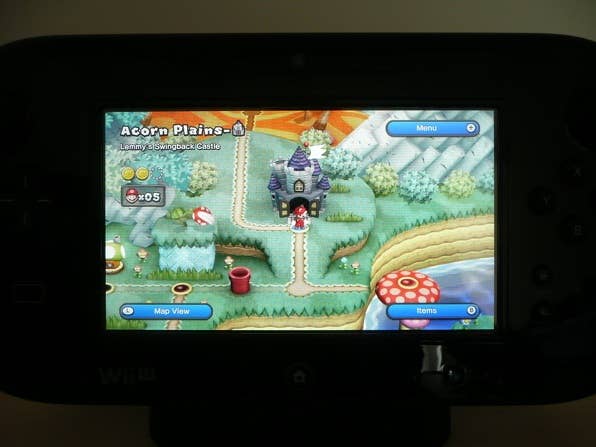
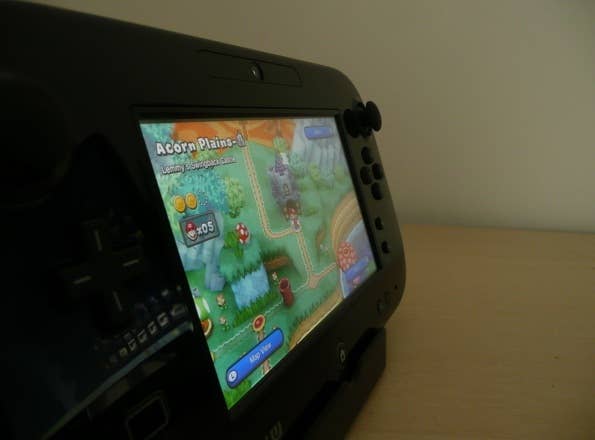
Nintendo's focus on using the GamePad as the centre of the experience - even in these initial stages - is a great idea. Simply going through the motions with the set-up procedure familiarises you with the tablet, and you can even use it as a TV remote (albeit limited to power on/off, input, volume and channel control). Despite the inexpensive parts, there are some pleasant surprises here: this clearly isn't anything like as good as an iPad-style IPS display, but viewing angles are fairly decent and colour reproduction is OK, if not spectacular. The lack of multi-touch support is a serious issue - for the browser in particular - but overall responsiveness from the screen is fine.
We'll be studying the latency in more depth soon with a bit more of a scientific approach, but our first hands-on impressions are positive, as games are equally as playable on the GamePad as they are on the big screen. Indeed, we have the feeling that the Wii U GamePad's response may actually be superior to a great many HDTVs out there, something we'll be quantifying in the upcoming days.
Image quality on the GamePad is an interesting topic. Up until now, nobody has really mentioned compression artefacts, but they are there if you look closely enough. Similar to the existing HD consoles, Wii U transmits an uncompressed 24-bit RGB HDMI signal to the HDTV via the HDMI connection, but a whole different process kicks in when the image is beamed over to the GamePad. Firstly, we see a downscale to 480p on mirrored content (though some titles render the second screen at native resolution - Nintendo Land amongst them) but beyond that we also have to factor in the compression system Nintendo uses - we have a sneaky suspicion it's an MJPEG implementation of sorts.
"Gamepad image quality isn't flawless but most people won't notice the subtle downgrades. Gamepad latency is generally excellent."
Look really closely and you'll see DCT artefacts on darker areas where the compression scheme has difficulty resolving intricate detail. This is almost unnoticeable (clearly Nintendo has a decent amount of bandwidth to play with), but the downsampling in chroma isn't: pure reds/pinks in particular are demonstrably pixelated, losing definition compared to the original, even factoring in the resolution downscaling. Generally this is not a problem - the whole reason colour space is downscaled in the first place is that the human eye is more sensitive to changes in luminance than it is in colour - and most people won't notice, but when Nintendo's key franchise character features many red highlights, you might want to understand why he doesn't look quite as crisp as he does on your HDTV, or why other elements on-screen don't have the same issue.

Range will be a more pressing concern for many. On a direct line of sight we had a solid connection to the main unit up until the 10m point. Mileage will vary according to location, but we had no problem maintaining that connection in a room directly above the console, but range clearly took a hit with warnings kicking in as we moved further away. But the fact it worked at all was a really pleasant surprise and it came across as a really strong feature for the console - so it's a bit of a shame that not every game supports the mirroring function. Overall though, unless you're gaming in Wayne Manor, you won't have any connection issues with the GamePad in the same room, but don't expect to be able to free-roam in your house with the controller. It's pretty good - perfectly serviceable in fact - but we're not talking Wi-Fi range here.
While the GamePad is a nice little piece of kit overall, it has a critical design flaw: battery life is horrendous. We booted up the Wii U this morning in order to apply the system update and explore the new OS functionality and found that the time available from the 5.6WHr cell was not enough to complete this process. We got just three hours of battery life until the red warning light appeared, another 25 minutes until the light started to flash ominously, then another five until the GamePad died completely, necessitating a recharge. With dire stamina like that, the mobility of the unit is compromised somewhat, and your instinct is to keep the AC adaptor close to hand. Bearing in mind that the GamePad is simply a dumb terminal, decoding AV transmissions and beaming back controller inputs, that level of battery life should be fairly uniform no matter what you're doing - whether playing games or watching media. However, the screen can be turned off to extend battery life, but obviously this will make some games unplayable.
Wii U: HDMI analysis
"Similar to the Xbox 360, Wii U scales to whatever resolution you select on the front-end menu system. On the US model, 480p, 720p, 1080i and 1080p are supported."
The good news is that Nintendo's debut HD offering features a standard HDMI connection, meaning compatibility with virtually any high-definition display made in the last six years. Better still is the fact that the company isn't selling us short in terms of connectivity: yes, no trips to Poundland are required here, because an HDMI cable is included in the box.
Adding to the good news is that Nintendo hasn't encrypted the digital output of the Wii U. There's no HDCP implementation, meaning that you can connect the Wii U to older DVI monitors with no support for the nigh-on useless digital encryption system. Probably of more relevance is that you can easily record video directly from HDMI using devices such as the Elgato Game Capture HD and the Hauppauge HD PVR 2 if you're looking to share gameplay on YouTube.
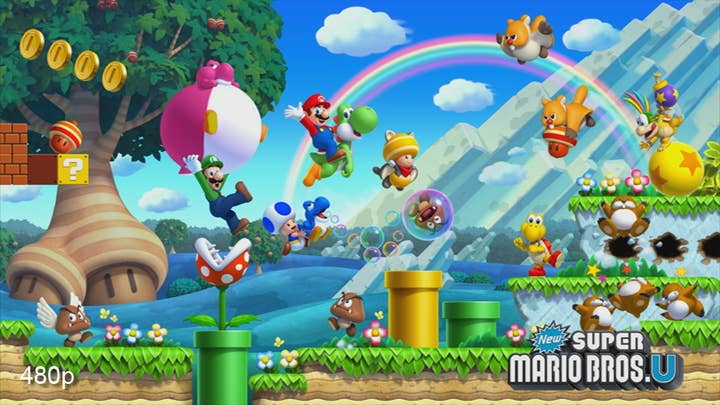
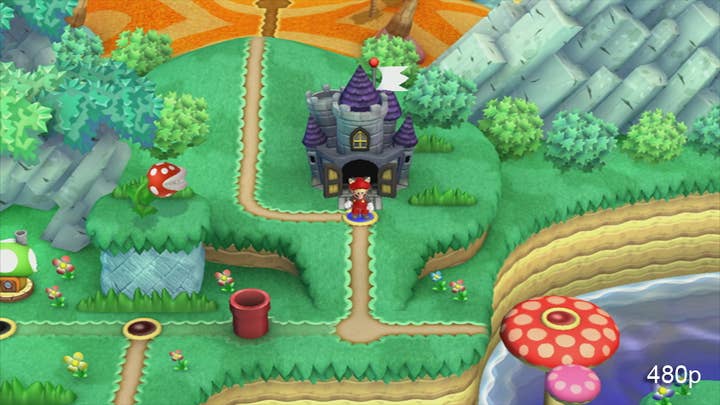
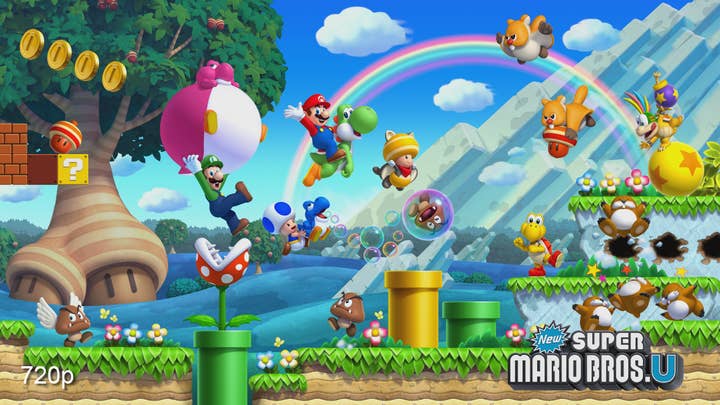
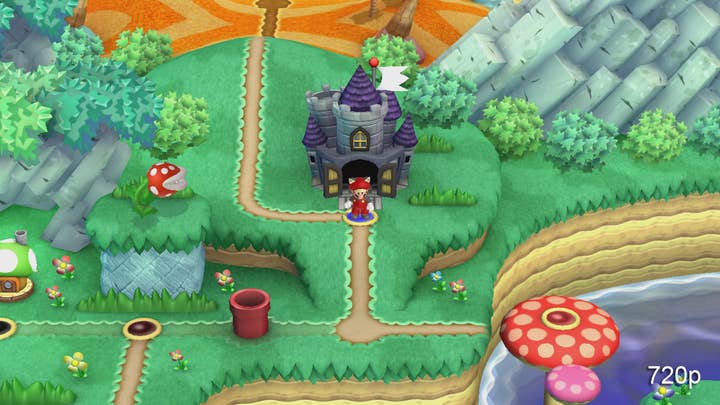
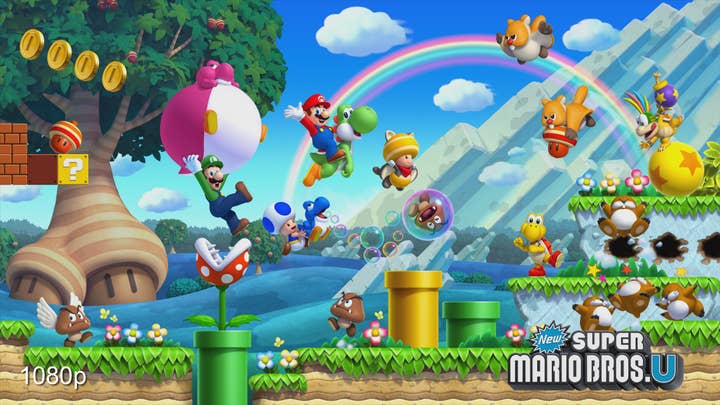

Nintendo appears to have taken a leaf out of Microsoft's book in terms of how various screen resolutions are dealt with. All of the games we've tested to date appear to operate at native 720p, but just like Xbox 360 the console outputs at any resolution you select, upscaling - or indeed downscaling - to your preferred video format. We'd have liked a 1366x768 option for native output for "HD ready" panels, but the available options are fine overall.
However, there is some unwelcome news - specifically that the HDMI output is locked to limited-range RGB only, with footage from all games we've captured thus far revealing absolutely no information in the 0-16 or 235-255 areas. Many digital displays - PC monitors in particular - don't operate correctly with limited-range RGB, giving washed out colours principally defined by blacks being more grey-like in nature. This is something Nintendo really needs to address as a matter of urgency - it's the most basic of omissions, something that Sony and Microsoft resolved to everyone's satisfaction many, many years ago.
Bizarrely, for a console launching when digital video standards are established and mature, many users may well find that they get a more vibrant picture by using the legacy component outputs.
System software: the day-one patch
Wii U's first system software update weighs in at around 1GB, which we should have been able to pipe down in less than five minutes on a 40Mbps fibre connection. As it is, the update took us 62 minutes to acquire in full, with reports from some of up to three hours' waiting time. This bears all the hallmarks of a lack of capacity server-side, something Nintendo should have been prepared for, but even the installation itself isn't exactly swift, taking 11 minutes to apply before the machine restarts. Poor online data throughput applies to game patches too: Nintendo Land's patch took about 20 minutes to download at 3.30pm on a Sunday afternoon, UK time - that would be early morning in the US, where demand is likely to be lower than usual.
Returning to the system software upgrade itself, it's safe to say that without the patch you're in for a threadbare OS experience with the default 1.0.1 firmware. There's no online play, no Miiverse, no browser, no video chat and no eShop. Remarkably, even the Wii back-compat isn't there out of the box. You can create Miis, view daily usage, adjust parental controls, change the initial set-up options, adjust screen burn reduction settings and manage onboard and external storage but other than that there's not much going on. What is notable is that Nintendo does like to keep users hanging about: moving further into the system menus incurs a 12-second delay, making for a frustrating experience. It's difficult to imagine exactly why we have to wait here, and just what the Wii U is doing behind the scenes that necessitates such lengthy delays.
"Chances are you'll get a better browsing experience by using your smartphone. The Wii U browser has some nice features but the gamepad's low resolution and the lack of multi-touch support are a real issue."
With the new 2.0.0 firmware installed, the languid nature of the interface doesn't improve a jot but you do get much more of the functionality you were promised. First up, your Mii is linked to a Nintendo ID - a process much like setting up a PSN account. A "gamertag" is chosen, then birthday, location and timezone are input, then the account is verified via email. Multiple IDs can be created, and you can select a default that automatically logs on when you start the console. The Nintendo ID is required for access to online gaming and the eShop, where further details (home address etc) are added in order to facilitate purchases - pre-paid and credit cards are supported, but unfortunately not PayPal.
An internet browser is supplied, which offers a fairly decent level of functionality for a console app - it manages to cope with most of the higher-end features we cram into a Digital Foundry Face-Off article (movie thumbnails apart) with the comparison zoomer working just fine, and it even handles our videos, something which Internet Explorer on Xbox 360 notably omits. Even the old Uncharted 3 60FPS video plays back at full frame-rate, better than running the same vid on many PCs. YouTube works just fine and 1080p video decoding is supported, even if the browser itself isn't running at the same high resolution.
However, while there are successes, there are plenty of functionality failures and snafus. Text input is a pain and the fact that the browser doesn't remember URLs or email addresses you've previously input manually is also a tad frustrating. Facebook appears to be hard-set in accessing only the mobile version of the site, a state of affairs thankfully not reflected elsewhere on other sites with bespoke cut-down versions. The browser also highlights dramatically just how far off the pace the touch-screen is. Without "pinch to zoom" functionality, analogue sticks need to be used instead for working your way around the page - it works, but it's counter-intuitive and feels slow and clumsy by comparison. Worst of all though, reading text really puts the 480p tablet display's shortcomings into perspective: the actual rendering itself is far from impressive, but downscaled onto the GamePad screen it makes for a sub-par experience that simply isn't good enough. On-screen, browsing works OK but living room browsing on an HDTV isn't really a comfortable experience.
Other patch additions are all about community - there's a video chat client for talking with people on your friends list (which we haven't tested, but we can tell you that it takes 40 seconds just to load it, up against the eight seconds of the browser) along with the online community showcase, Miiverse. Superficially, a Miiverse "skin" replaces the basic Wii-like tiles-based menu screen, showing Miis grouping around the various options, while the Nintendo avatars give you a few tips about what functionality is on offer with each selectable - as if you need telling what the eShop or internet browser do.
"The standard 'factory' OS is a threadbare affair with no support for older Wii titles and no online support whatsoever. A 1GB patch is required to get at these features."
Miiverse itself is selected here (taking a slightly saner eight seconds to load), allowing you to enhance your profile, adjust settings, catch up on your friends' doings in the activity feed and read messages and notifications. The Communities area is like a bulletin board/forum hybrid, sectioned according to region (Europe/Oceania, Japan and America), with topics limited to each available game or app. Messages can be typed via keyboard, scrawled using the touch-screen, making for a varied, visually appealing experience. One thing that does seem a little odd is that users cannot create their own topics, and the topics themselves are unordered, currently presented in one large list. Accessing Miiverse in-game will direct you to the game's specific topic automatically though.
There are some interesting features. During gameplay, pressing the home button on the GamePad allows you to upload the current screen onto a Miiverse topic. However, the shot itself is not displayed at native resolution, there appears to be no way to dump the screenshot onto SD card or hard drive, and currently there is no way to use these assets outside of Nintendo's own community. The ability to tweet screenshots or post them to Facebook is entirely absent.
Nintendo Wii U - the Digital Foundry verdict
So does the next-gen really start now? We would suggest not. True to form, Nintendo has adopted its own approach to the HD revolution that engenders feelings of both delight and disappointment. Back in April 2011, when "Project Café" was first announced, we speculated that the hardware make-up of the machine would be modest by today's standards - that there may well be cross-platform games that fall short of the standard set by the now-vintage current-gen consoles. We'll be looking at the ports in more depth across the coming days and weeks in a series of Face-Off updates, but day-one impressions from the US launch appear to lend weight to our original assessment.
Bearing in mind the general level of performance we've seen from the £300 Digital Foundry PC - built using off-the-shelf parts - it's a touch disappointing that graphical quality in Wii U shows no generational leap at all over the Xbox 360 or PlayStation 3. The DFPC is in the same ballpark price-point as Wii U, it features superior CPU/GPU power, twice as much RAM and much more storage. The notion that Nintendo could not match or better it in an integrated design bearing in mind the vast buying power it has at its disposal - even factoring in the additional cost of touch-screen GamePad - is disappointing.
"There's nothing here to suggest that Wii U offers next-gen graphical power - but as an HD platform for Nintendo's designers we can't wait to see what they come up with in future."
In a world where Chinese manufacturers can sell complete Android tablets with capacitive touch-screens for £50, it's safe to say that the Wii U GamePad won't be costing Nintendo too much to construct. That being the case, factoring in the modest processing power on offer, we were firmly of the belief that the platform holder would be targeting a £199/$299 price-point for Wii U. Sadly, it was not to be. From what we've experienced of the hardware and games thus far, the new console definitely feels a bit pricey, bearing in mind the gaming proposition on offer.
Software quality will undoubtedly improve over the coming months, but with Microsoft and Sony looking to launch their own next-gen consoles within the year, time is not exactly on Nintendo's side. One developer working on a key AAA franchise port told us anonymously that the Nintendo toolchain is "fighting us every step of the way", suggesting that plenty of work still needs to be done in getting development workflow up to scratch. Will the tools improve in time? Will publishers have the time and the financial incentive to stick with it?
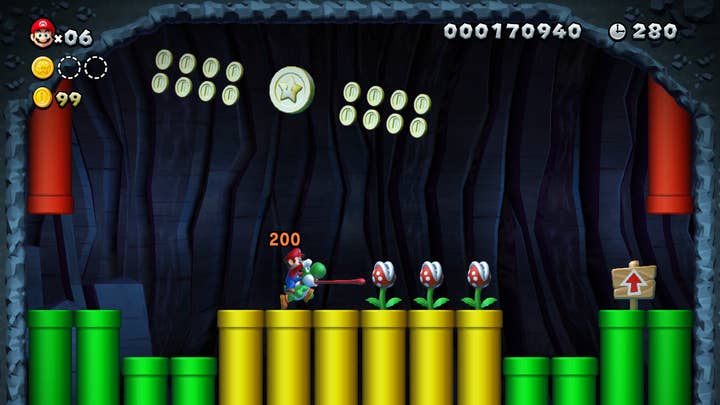
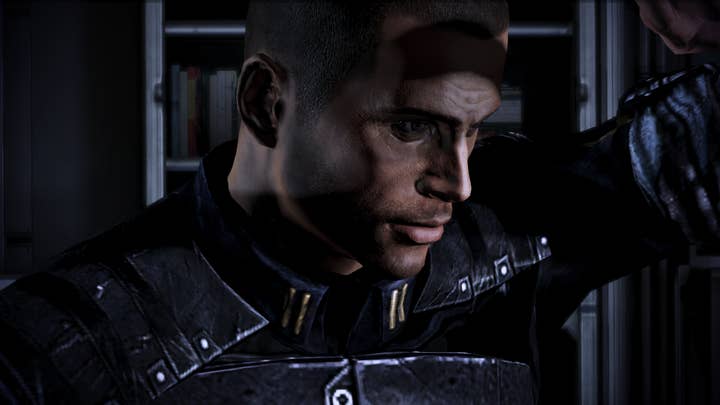


Of course, this is a Nintendo console and so horsepower comparisons with current-gen machines are not the be-all and end-all - Wii U is a console product with unique properties, after all, where once again it's all about the controller - but the problem facing the platform holder is that none of its launch titles offers the same kind of beguiling mainstream experience that Wii Sports did back in 2006. New Super Mario Bros. U is a joyous, beautiful game with a combination of art and gameplay direction that only Nintendo can produce, but it makes no real innovative use of the GamePad's unique properties at all. Nintendo Land has the same level of untouchable production values, and comes across as a vast melting pot of cute ideas that by and large are a joy to explore, but it seems less likely to become a system seller by itself.
Perhaps the problem is that human beings have just one set of eyes. Many of the mini-games have you constantly shifting focus between the two screens, to the point where the software is actually telling you where to look. It feels forced and unnatural, and in many cases it just doesn't work. It's telling that it's the multiplayer Nintendo Land offerings - where the GamePad gets its own discrete view - that work best. It's a logical use for the second screen (which explains why Mario has the same functionality), but it's not a must-have, console-defining feature.
What Wii U's first-party exclusives do provide, however, is a first look at how some of the greatest games designers in the world might utilise more modern hardware than we found in the original Wii, and in this respect Nintendo's new console delivers, because its first HD offerings are enjoyable, beautiful games that undoubtedly have a unique appeal to gamers of all ages. What's more, the quality of these unique, untouchable games will only get better as the Wii U matures. Nintendo is the Pixar of video games, and despite the odds stacked against the console, for many prospective buyers, that in itself will be more than enough.
This article is also available on Eurogamer.net.
